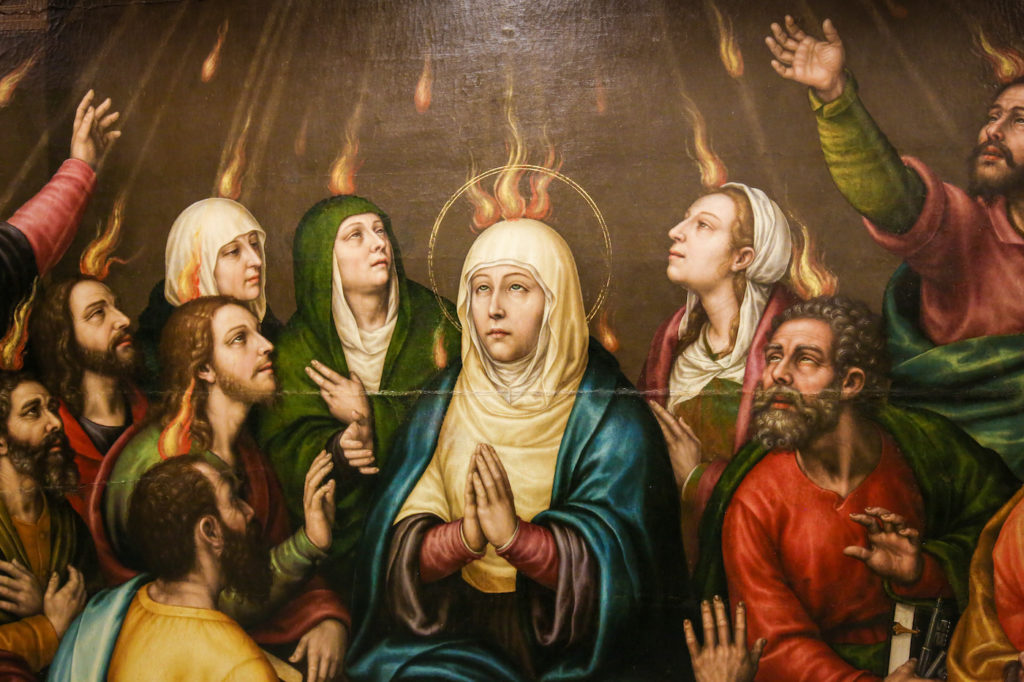How did the modern world emerge? In his 2020 book, The WEIRDest People in the World: How the West Became Psychologically Peculiar and Particularly Prosperous, Harvard University Professor of Human Evolutionary Biology Joseph Henrich says the credit (or blame) falls to the Catholic Church’s teachings on marriage and family. People from Western, educated, industrialized, rich, and democratic (WEIRD) cultures differ vastly in psychology from people from non-WEIRD cultures in terms of individualism, time, thrift, hard work, adherence to impartial principles, and analytical thinking.
A WEIRD psychology eventually gave rise to free markets, inalienable rights, and democracy. Where did this distinctive psychology come from?
Family Structures in the Medieval Era
Henrich’s answer is that “the medieval Catholic Church inadvertently altered people’s psychology by promoting a particular set of prohibitions and prescriptions about marriage and the family that dissolved the densely interconnected clans of Western Europe into small, weak, and disparate nuclear families.” Considered historically, the Church’s distinctive marriage and family norms were not shared by 99.3 percent of societies globally. Unlike other religions, the Church forbade marriage to siblings, in-laws, and even distant cousins. Limited in their eligible marriage partners, people had to look outside their extended clan for spouses. The search for spouses led to greater relational and residential mobility.
Start your day with Public Discourse
Sign up and get our daily essays sent straight to your inbox.The Church also insisted on the free consent of both parties to marriage. This undermined the power of patriarchs in arranging marriages to foster alliances useful to the extended family. Henrich notes, “Norms about arranged marriages empower patriarchs to strategically use their daughters’ marriages to nourish their clan’s network of alliances and relationships.” The free consent of medieval marriages weakened these clans.
Limited in their eligible marriage partners, people had to look outside their extended clan for spouses. The search for spouses led to greater relational and residential mobility.
The Church’s insistence on free consent included the freedom not to marry at all. Henrich writes, “By age thirty, some 15–20 percent of northwestern European women remained unmarried. The Church provided a respectable alternative institutional mechanism to evade marriage: women could enter the convent. By contrast, in most societies close to 100 percent of females married, and usually at young ages. In traditional China, for example, only 1–2 percent of women remained unmarried at age thirty.” Discernment of various religious vocations and the free choice of marriage led to greater emphasis on individualism.
Unlike 85 percent of human societies, the Church’s marriage and family program also insisted on monogamous marriage. In polygamous cultures, many lower-status men have no opportunity to find a mate, since so many women are taken as wives by rich and powerful men. Lower-status men have less to lose in challenging the status quo, doing risky behavior that may increase their status, and committing violent crimes such as assault, rape, and murder. Crime rates go up as men without mates engage in fierce competition in order to ascend the dominance hierarchy where high-status males enjoy harems of wives and concubines. The Church’s ban on polygamy (and insistence on marital fidelity for men and women alike) lessened zero-sum thinking and risk-taking by men.
The Church also encouraged newly married couples to set up separate households from their families (neolocal residences). Cities grew larger and larger as a greater number of people left the land owned by their clan.
New Associations, Prospering Markets, and Increased Literacy
The social consequences of dissolution of strong kinship ties included a rise in voluntary associations, such as universities, guilds, and religious orders (Cistercians, Dominicans, Franciscans). These voluntary associations both arose from and prompted further development of WEIRD psychology in part by competing among each other for members. In place of a family patriarch making decisions, impartial rules and principles governed these voluntary associations that elected their own leaders. Henrich writes, “New monastic orders, guilds, towns, and universities increasingly built their laws, principles, norms, and rules in ways that focused on the individual, often endowing each member with abstract rights, privileges, obligations, and duties to the organization.” The inalienable human rights of individuals became more plausible in such contexts.
Since clan ties were weakened, the extended family could no longer provide all that was needed for survival and thriving. Market exchange increased, and formal contracts coordinated economic activity outside extended families. Developing markets rewarded time thrift, hard work, and cooperative enterprises with non-kin. These commercial relationships were governed by explicit legal rules as well as implicit social norms. “In an open market for employees, friends, spouses, and business partners, people want to hire, befriend, marry, and associate with those who can achieve long-term goals, invest now for future payoff, avoid temptation, and simply show up on time. By contrast, in a world governed by inherited and enduring relationships, people can’t just pick whom they want to hire, marry, or work with. They need to consider group loyalty and select partners with whom they have dense social interconnections.”
The Church dissolved intensive kinship through its marriage and family program, and thereby shifted people’s psychology to be open to political pluralism, free markets, individual rights, and modern democracy.
These market forces increased prosperity. “Greater prosperity led to other changes, including rising life expectancies, declining infant mortality, and the virtual disappearance of famines.” It wasn’t Europe’s aristocrats and royal families (who remained more tied to kin-based institutions) who fueled these market changes. Rather, markets were fueled by middle-class guild members who married outside the extended family and no longer lived on their father’s land. The Church’s marriage and family program led to greater impersonal honesty and a universal morality. Long before the Enlightenment, the Church’s marriage and family program led to representative governments, universities, and social safety nets. The Church dissolved intensive kinship through its marriage and family program, and thereby shifted people’s psychology to be open to political pluralism, free markets, individual rights, and modern democracy.
These changes in the psychology of populations were further extended by Martin Luther and the Protestant principle of sola scriptura. Luther encouraged secular rules to establish schools where boys and girls could learn to read the Bible. Unlike prior cultures in which no more than 10 percent of people could read, literacy rates soared in the Germany of the Protestant Reformation. Literacy itself shifted the psychology of readers towards an even WEIRDer psychology, and not just among Protestants. “Recent evidence suggests that the Jesuits—at least where they had full control—created long-term psychological legacies that seem even more ‘Protestant’ than those of the Cistercians.” Henrich provides a fascinating account of the cultural evolution of a WEIRD world.
The Author Speaks beyond His Expertise
But at times, the author also goes well beyond his considerable expertise. For example, Henrich writes, “Of course, the best available science says that our minds are produced entirely by our bodies and brains, so they can’t have an independent existence. . . . If an omniscient engineer had crafted an integrated cognitive system for us, she certainly would have ruled out mind-body separations since they are impossible. Dualistic conceptions like souls or ghosts should make about as much sense to us as a person who exists only Tuesdays and Thursdays.”
In fact, the best available philosophy says that things are a lot more complicated than Henrich’s naturalistic materialism indicates. Thomas Nagel, for example, argues that a materialistic reduction of mind to matter cannot account for consciousness, intentionality, meaning, and value. In his book Where the Conflict Really Lies: Science, Religion, and Naturalism, Alvin Plantinga points out that the practice of science itself cannot be accounted for in naturalistic terms, for our minds did not evolve for success in abstract and speculative thought, like doing science. Henrich seems unfamiliar with such contemporary philosophical rejections of materialism and defenses of dualism, discussions fully informed by contemporary science.
Penicillin, the steam engine, and vulcanized rubber were all discovered by accident, and yet these were real discoveries of immense value. So too, even if it were true that belief in one God arose through the cultural mechanisms Henrich describes, that belief may still be true.
Henrich’s book also seems, at times, to fall into the genetic fallacy. “Beliefs evolved not because they are accurate representations of reality,” he writes, “but because they help communities, organizations, and competitors beat their competition.” Henrich explains away the monotheistic “big gods” like the God of Abraham. Henrich accounts for monotheism in terms of the competitive advantage of large groups held together by religious bonds to one God, rather than by tribal ties to local gods. But the origin of a belief does not determine the truth or falsity of a belief. Penicillin, the steam engine, and vulcanized rubber were all discovered by accident, and yet these were real discoveries of immense value. So too, even if it were true that belief in one God arose through the cultural mechanisms Henrich describes, that belief may still be true.
Finally, Henrich’s book does not offer any account of why the Church developed and enforced their almost unique marriage and family program for centuries. Perhaps to delve into such issues would be to enter the field of moral theology. But Henrich’s account remains incomplete without some explanation of why the Church taught its marriage and family program contrary to the wishes of powerful men, and of why the Church struggled for centuries to have the faithful live out its challenging teaching on marriage. Despite caveats, I’ve seldom learned as much from a single volume as I did from The WEIRDEST People in the World.














